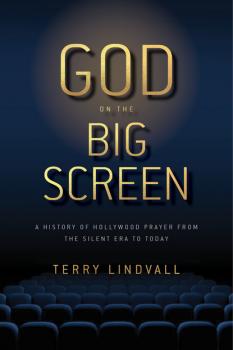Terry Lindvall
Список книг автора Terry LindvallCelluloid Sermons
Christian filmmaking, done outside of the corporate Hollywood industry and produced for Christian churches, affected a significant audience of church people. Protestant denominations and individuals believed that they could preach and teach more effectively through the mass medium of film. Although suspicion toward the film industry marked many conservatives during the early 1930s, many Christian leaders came to believe in the power of technology to convert or to morally instruct people. Thus the growth of a Christian film industry was an extension of the Protestant tradition of preaching, with the films becoming celluloid sermons. Celluloid Sermons is the first historical study of this phenomenon. Terry Lindvall and Andrew Quicke highlight key characters, studios, and influential films of the movement from 1930 to 1986—such as the Billy Graham Association, with its major WorldWide Pictures productions of films like The Hiding Place, Ken Curtis’ Gateway Films, the apocalyptic “end-time” films by Mark IV (e.g. Thief in the Night), and the instructional video-films of Dobson’s Focus on the Family–assessing the extent to which the church’s commitment to filmmaking accelerated its missions and demonstrating that its filmic endeavors had the unintended consequence of contributing to the secularization of liberal denominations.
God Mocks
Winner of the 2016 Religious Communication Association Book of the Year Award In God Mocks, Terry Lindvall ventures into the muddy and dangerous realm of religious satire, chronicling its evolution from the biblical wit and humor of the Hebrew prophets through the Roman Era and the Middle Ages all the way up to the present. He takes the reader on a journey through the work of Chaucer and his Canterbury Tales, Cervantes, Jonathan Swift, and Mark Twain, and ending with the mediated entertainment of modern wags like Stephen Colbert. Lindvall finds that there is a method to the madness of these mockers: true satire, he argues, is at its heart moral outrage expressed in laughter. But there are remarkable differences in how these religious satirists express their outrage.The changing costumes of religious satirists fit their times. The earthy coarse language of Martin Luther and Sir Thomas More during the carnival spirit of the late medieval period was refined with the enlightened wit of Alexander Pope. The sacrilege of Monty Python does not translate well to the ironic voices of Soren Kierkegaard. The religious satirist does not even need to be part of the community of faith. All he needs is an eye and ear for the folly and chicanery of religious poseurs. To follow the paths of the satirist, writes Lindvall, is to encounter the odd and peculiar treasures who are God’s mouthpieces. In God Mocks, he offers an engaging look at their religious use of humor toward moral ends.
Sanctuary Cinema
Winner of the Religious Communication Association Book of the Year Award for 2008 Sanctuary Cinema provides the first history of the origins of the Christian film industry. Focusing on the early days of film during the silent era, it traces the ways in which the Church came to adopt film making as a way of conveying the Christian message to adherents. Surprisingly, rather than separating themselves from Hollywood or the American entertainment culture, early Christian film makers embraced Hollywood cinematic techniques and often populated their films with attractive actors and actresses. But they communicated their sectarian message effectively to believers, and helped to shape subsequent understandings of the Gospel message, which had historically been almost exclusively verbal, not communicated through visual media.Despite early successes in attracting new adherents with the lure of the film, the early Christian film industry ultimately failed, in large part due to growing fears that film would corrupt the church by substituting an American “civil religion” in place of solid Christian values and amidst continuing Christian unease about the potential for the glorification of images to revert to idolatry. While radio eclipsed the motion picture as the Christian communication media of choice by the 1920, the early film makers had laid the foundations for the current re-emergence of Christian film and entertainment, from Veggie Tales to The Passion of the Christ .
God on the Big Screen
Film history meets church history through the ritual of prayers Moments of prayer have been represented in Hollywood movies since the silent era, appearing unexpectedly in films as diverse as Rebecca of Sunnybrook Farm , Frankenstein , Amistad , Easy Rider , Talladega Nights , and Alien 3 , as well as in religiously inspired classics such as Ben-Hur and The Ten Commandments . Here, Terry Lindvall examines how films have reflected, and sometimes sought to prescribe, ideas about how one ought to pray. He surveys the landscape of those films that employ prayer in their narratives, beginning with the silent era and moving through the uplifting and inspirational movies of the Great Depression and World War II, the cynical, anti-establishment films of the 60s and 70s, and the sci-fi and fantasy blockbusters of today. Lindvall considers how the presentation of cinematic prayer varies across race, age, and gender, and places the use of prayer in film in historical context, shedding light on the religious currents at play during those time periods. God on the Big Screen demonstrates that the way prayer is presented in film during each historical period tells us a great deal about America’s broader relationship with religion.



